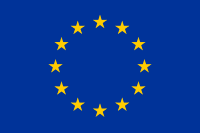Ipotesi e approfondimenti
Proponi un'ipotesi e condividi i tuoi risultati
Modifiche a "Monetization in online streaming platforms: an exploration of inequalities in twitch.tv"
Modalità di visualizzazione confronto:
Modalità visualizzazione HTML:
Titolo
- +{"en"=>"Monetization in online streaming platforms: an exploration of inequalities in twitch.tv"}
Corpo del testo
-
+["
- Context
- The live streaming platform Twitch underwent in recent years an impressive growth in terms of viewership and content diversity.The platform has been the object of several studies showcasing how streamers monetize their content via a peculiar system centered around para-sociality and community dynamics. Nonetheless, due to scarcity of data, lots is still unknown about the platform-wide relevance of this explanation as well as its effect on inequalities across streamers.
- Hypothesis
- Thanks to the recent availability of data showcasing the top 10,000 streamers revenue between 2019 and 2021, as well as viewership data from different sources, we characterized the popularity and audience monetization dynamics of the platform. Using methods from social physics and econometrics, we analyzed audience building and retention dynamics and linked them to observed inequalities. We found a high level of inequality across the platform, as well as an ability of top streamers to diversify their revenue sources, through audience renewal and diversification in monetization systems. Our results demonstrate that, even if the platform design and affordance favor monetization for smaller creators catering to specific niches, its non-algorithmic design still leaves room for classical choice biases allowing a few streamers to emerge, retain and renew a massive audience.
- Collaboration
- Related dataset URL
- https://participate.indices-culture.eu/assemblies/indicesDatasets/f/163/proposals/188
- Related insights URL
- https://participate.indices-culture.eu/assemblies/hypotheses/f/170/posts/9
- Indicators
- Creator's revenues
- Evaluation
Autore della versione
Versione creata il
02/12/2022 12:29




